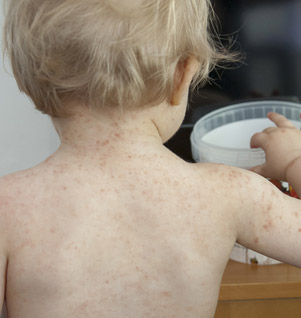This salt alternative could help reduce blood pressure. So why are so few people usingit?
Hand, foot and mouth disease (HFMD) is a common childhood illness that is caused by a viral infection. The most common virus causing hand, foot and mouth disease is the Coxsackie A16 virus, but there are an increasing number of viruses associated with the condition. Some of these viruses can cause quite severe illness.
HFMD typically affects children under the age of 10 years, but older children and adults can also be affected. In the majority of instances it’s mild. There is no relationship between hand, foot and mouth disease and the condition known as foot-and-mouth disease that affects animals.
Hand, foot and mouth disease symptoms
- Symptoms generally start to appear 3-7 days after becoming infected with the virus;
- Initial symptoms are mild fever, tiredness, reduced appetite, and sore throat;
- The characteristic features — mouth sores and skin rash — usually develop one or 2 days after the onset of fever;
- The rash appears as flat or raised red spots, which may form blisters;
- The rash is not itchy, and usually affects the palms of the hands and soles of the feet;
- In younger children, especially those still wearing nappies, the rash may also appear on the buttocks;
- The mouth sores, which start as small red spots and form painful blisters, often turn into ulcers.

How is the infection spread?
The disease spreads easily from person to person, often resulting in outbreaks in schools or child care centres. Outbreaks are most common in summer and early autumn. You can catch the virus from an infected person if you come into contact with their saliva, secretions from their nose or throat (through coughing or sneezing), fluid from blisters, or faeces.

Is hand, foot and mouth disease a serious illness?
HFMD is usually a mild disease, and children generally recover within 7-10 days. Rarely, a child with HFMD may develop complications such as meningitis (inflammation of the membrane surrounding the brain). If your child develops a stiff neck, headache or back pain then you should consult your doctor.
Treatment for hand foot and mouth disease
There is no specific treatment for HFMD, and because the disease is caused by a virus, antibiotics are not effective. (Antibiotics can only be used to treat bacterial infections.) However, a simple pain reliever such as paracetamol is often all that is required to treat the symptoms. For adults, gargling or rinsing the mouth with salt water or an antiseptic mouthwash may help relieve the pain associated with mouth sores.
Preventing spread of infection
You can help prevent the spread of the virus by washing your hands frequently, as well as washing and disinfecting contaminated items and surfaces. Try to make sure your child doesn’t share items such as eating utensils, cups or towels while they are ill. Adults are rarely susceptible as they have often had the infection already as a child and are subsequently immune. There is no vaccine available.
When can my child go back to school or child care?
It’s best if children with HFMD stay away from school or child care until all the blisters have dried.
Related
ncG1vNJzZmilqZm%2Fb6%2FOpmWarV%2BgtqW%2FjK2cnqajYrWmrcutn2igkaOxbrLOqKtmmZ6Zeq671K2fZpyZqLKiv8Ro